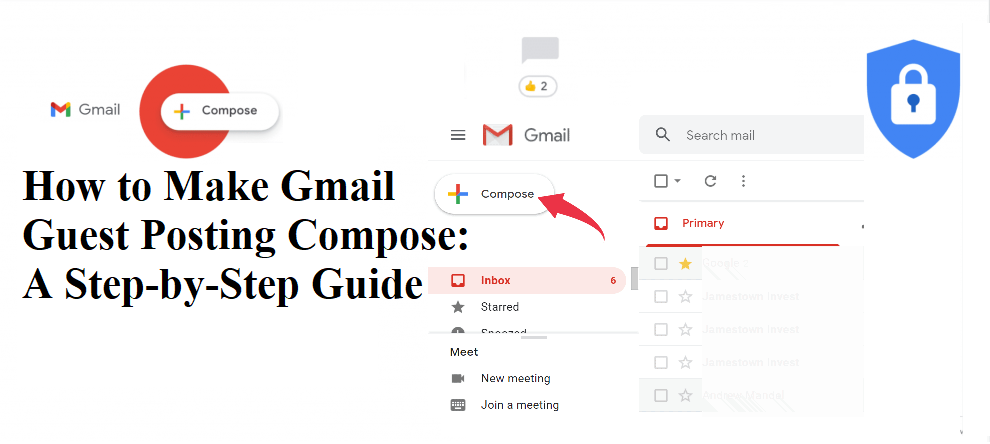Step 1: Research Guest Posting Sites
Before you even open Gmail to compose a guest post pitch, it’s important to research the sites that accept guest posts. If you already have a list of sites (like the ones you mentioned), review each site to ensure they match your niche, audience, and content style. Here are some criteria to consider when choosing sites for guest posting:- Domain Authority (DA): Ensure the site has a high DA score (usually 40+ is ideal).
- Audience Relevance: Choose sites that share the same target audience as your blog or website.
- Guest Post Guidelines: Each site may have specific rules for guest posts, such as word count, style, and content structure.
- Engagement: Check if the site has an active comment section or social media presence.
Step 2: Open Gmail and Start a New Email
Head over to Gmail and click the Compose button in the top left corner. This opens up a new message window where you can start crafting your pitch.Step 3: Structure Your Gmail Message
An effective guest post pitch should be concise, professional, and to the point. Here’s a template structure for your Gmail guest post email:1. Subject Line
The subject line is your first impression, so make it catchy but clear. A strong subject line could be:
-
- “Guest Post Submission: [Your Topic]”
- “Interested in Writing for [Site Name]”
2. Introduction
Begin with a brief introduction about yourself. Mention your expertise and what value you bring.
Example: “Hi [Editor’s Name], I’m [Your Name], a content writer and SEO enthusiast who regularly contributes to sites like [Name a few reputable sites]. I’ve been following [Site Name] for a while and love the insightful content you provide on [mention a topic from their blog].”
3. Your Pitch
Clearly state your guest post idea. It’s best to pitch one or two ideas that align with the site’s content.
Example: “I would love to contribute a guest post on [Topic A] or [Topic B]. I believe these topics will resonate with your readers, and I’d be happy to customize the content to meet your editorial guidelines.”
4. Sample of Previous Work
If you have published content elsewhere, include a link or two as proof of your writing quality.
Example: “You can check out my previous work here:
-
- [Link 1]
- [Link 2]”
5. Closing
End the email by showing appreciation and offering to provide more details or a draft.
Example: “Thank you for considering my request. I would be happy to provide a draft or more details if needed. Looking forward to hearing from you!”
6. Signature
Make sure to include a professional signature with your name, website (if applicable), and social media links.
Example: “Best regards, [Your Name] [Your Website] [Your Social Media Handles]”
Step 4: Review and Personalize
Before hitting send, review your message to ensure there are no typos and that the content is personalized. Mention the site’s name, the editor’s name (if available), and refer to specific blog posts or topics from their site. Personalizing your message increases your chances of getting a response.Step 5: Send and Follow Up
Once you’ve personalized and reviewed your email, send it off! If you don’t hear back within a week or two, send a polite follow-up email.Suggested Guest Posting Sites
Here are some sites you mentioned that accept guest posts. I’ve checked them out for you, and here’s a brief analysis of each:
-
- [Site 1]
- DA: 45
- Niche: Digital Marketing
- Submission Guidelines: Accepts guest posts related to SEO, content marketing, and online advertising. Word count: 1,000+ words.
- [Site 2]
- DA: 50
- Niche: Technology & Gadgets
- Submission Guidelines: Open to technology-related guest posts. Requires 1,500+ words, with an emphasis on original research.
- [Site 3]
- DA: 38
- Niche: Health & Wellness
- Submission Guidelines: Accepts guest posts on health topics. They prefer writers with expertise in healthcare or fitness.
- [Site 1]
